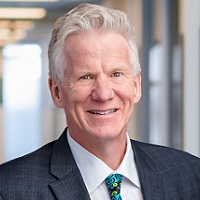 By Nick van Terheyden aka Dr Nick, Principal, ECG Management Consulting
By Nick van Terheyden aka Dr Nick, Principal, ECG Management Consulting
Twitter: @drnic1
Host of Healthcare Upside Down – #HCupsidedown
Healthcare has never quite operated the way other industries do. Take staffing, for example. Other industries have experienced declines in numbers of employees as new efficiencies and technologies have reduced the need for manual labor and shifted work to other areas or different tasks. Healthcare, by comparison, routinely sees increasing staffing levels and rising costs. And staffing constitutes a massive proportion of any healthcare facility’s annual expenditure.
A closer look at the average health system workforce raises intriguing questions. It’s estimated that physicians account for 5% of the healthcare workforce, and nurses about 10%. Who makes up the remaining 85%?
Episode NOW on Demand
“It’s pretty transparent to look at a health system in a geography, look at their revenues, look at the number of people they employ, and separate the clinical employees from the administrative,” says Sheila Talton. “If I were on the board, I would ask the health system to show me whether we fall in line with our competitors across the country—our ratio of administrative staff to clinical staff.”
Sheila is the CEO of Gray Matter Analytics, which uses advanced analytics to help healthcare organizations cut costs, improve outcomes, and optimize value-based care performance. She joins me on this episode to talk about making healthcare more efficient and more transparent—and how eliminating waste and excess in the system can help providers and patients. Here are a few excerpts.
Increasing automation.
“There are still a lot of manual activities that go on in the health system that really don’t touch the patient. And as a result of that, the people in charge should be asking themselves, ‘what do we do manually that we can automate, that would improve efficiency, and also free up clinicians to spend more time in actually seeing patients and attending to patients?’”
Rethinking the health system board.
“I think it really starts with the boards of health systems. Traditionally, the board was made up of donors versus businesspeople who would not run their businesses the way most health systems are run. I’m focused on executives and businesspeople that have figured out how to apply technology to their supply chains, to their overall value chains, who can transfer that knowledge to health systems. It’s the board’s responsibility to establish the right incentives for eliminating administrative activities that are necessary but don’t necessarily have to be done by a human.”
Transparency as a differentiator.
“A patient deserves the right to have transparency of cost and also to be able to shop—‘Where is the best clinician that’s going to serve my needs?’ That’s no different than any consumer buying any other service. And CMS is really pushing for transparency around price, so it’s going to come whether [health systems] like it or not. But the way to differentiate yourself with a patient population is around the service. So the more that [health systems] can free up administrative tasks being done by clinicians, the more they can improve their overall service to serving their patients, which is a differentiator.”
About the Show
The US spends more on healthcare per capita than any other country on the planet. So why don’t we have superior outcomes? Why haven’t the principles of capitalism prevailed? And why do American consumers have so much trouble accessing and paying for healthcare? Dive into these and other issues on Healthcare Upside/Down with ECG principal Dr. Nick van Terheyden and guest panelists as they discuss the upsides and downsides of healthcare in the US, and how to make the system work for everyone.
This article was originally published on the ECG Management Consulting blog and is republished here with permission.
